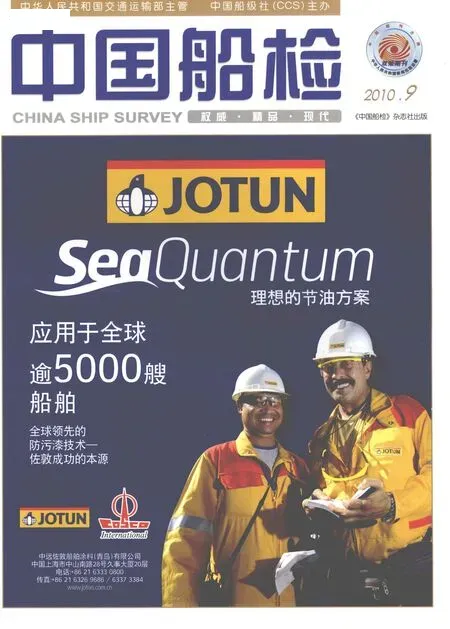The Development of Rules and Standards for Ice Ships
By Xu Yunxiu
With the accelerated pace of global warming,the ice layer of North Pole is gradually decreasing. North Pole navigation has become one of the hot topics in international maritime industry. The research on rules and standards for ships navigating in the ice area has also attracted vast attention.
As the ice-breaking ship with CCS’s highest ice class notation,M/V “Xue Long” made another new contribution.For the second time,it successfully transported North Pole scientific exploration team to the North Pole,and set the record of China’s North Pole exploration team reaching the northernmost point of the Arctic Ocean in its several exploration trips. At the beginning of 2010,the fi rst 1000TEU ice-strengthened express container ship M/V“Hercules J” of 13000 DWT built by China was delivered to the shipowner after sea trial. It is suitable for navigating in the severely cold conditions of high latitude areas like the Baltic Sea.
Over the past twenty years,scientific exploration in the North Pole and South Pole areas by China has been developing in an intensive and smooth manner. The level of construction of ships navigating in the ice areas has increased rapidly. It could be said that this could not be possible without CCS’s contribution in the rules and standards for classi fi cation of ships navigating in the ice sea areas.
Classification societies have incorporated into their respective rules,or have developed their rules based on the “Finland-Sweden Ice Class Rules”. As the “class notations for special function”,it is a non-mandatory requirement.Before 1973,there was not a concept of ice strengthening in the rules published by the Register of Shipping of China(the predecessor of CCS). In the“ Rules and Regulations for the Construction of Sea Going Steel Ships ”(1973),requirement for additional notation for ice strengthening was added,including 4 notations as B1.*,BII,BIII and BIV,which responded with the 4 ice class notations of the“Finland-Sweden Ice Class Rules”.
The “Rules and Regulations for the Construction and Classifi cation of Sea Going Steel Ships” (1983) amended ice class notations with one additional notation “Ice Class B”. It only applies for Chinese Bohai sea area and mainly addressed to the strengthening of partial structure of the hull without requirements for machinery strengthening.
The “Rules and Regulations for the Construction and Classification of Sea Going Steel Ships” (2001) added the requirement for additional notation “competence of ice breaking ”. Ships complying with this additional notation should be more competent in ice breaking than ships with“Ice Class B1*”notation,this is to say,it is able to break the ice and remove the obstacles for other ships that are navigating in the ice areas.
At present,CCS rules and regulations for ice ships can meet the demand for the design and construction and operation of ships navigating in various ice areas and of polar scientific exploration ships. CCS not only actively participates in IMO and IACS’s work of developing technical standards for ships navigating in polar sea areas,but also carries out research on technical standards related to ice-breakers in order to establish the system of CCS rules and standards for various ships navigating in the ice sea areas.

